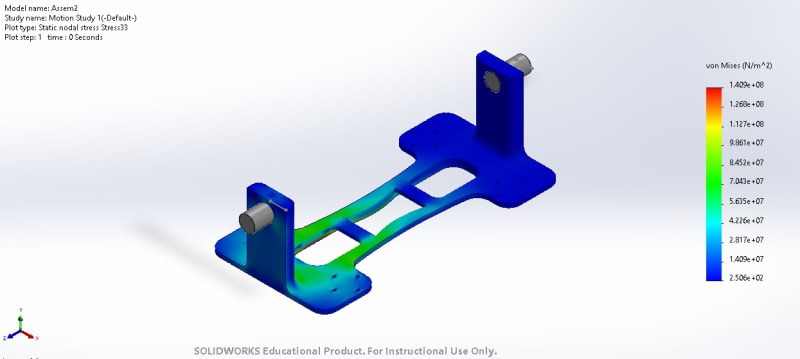Brad-y
Student
- Jul 18, 2024
- 4
Good afternoon! MY name is Bradley I am working at a robotics lab this summer and I wanted to ask for some help regarding a problem I have. The issue is that I need to find a way to attach a platform to a metal block which s the arm of the platform using bolts that will exit from the block and pass through the platform before being secured by a nut. I've seen online potentially using different variation of screws with anchors, however I have trouble deciding what is necessary. For instance i also seen that I could thread holes into the arm and get a double sided bolt to secure the load, however the platform will be swinging and vibrating, which I am concerned may lead to the threads loosening and failing at high loads/frequencies. Any ideas would be greatly appreciated, as well as if anyone could give recommendation based on their experience regarding the strength of the bolts I will need and the method to attach them. I will also note that previous platforms were attached using welds however the professor wants to use bolts instead, which is why if anyone can illuminate whether the anchors are necessary or rather with specific nuts/bolts the platform can be kept modifiable.
An image of the platform and arm structure is below. In the current design the platform and arm are one solid block, but I want to model a realistic attachment between the platform (flat area) and the arm (vertical rectangular extensions on either side).

The SOLIDWORKS file:
[URL unfurl="true"]https://res.cloudinary.com/engineering-com/raw/upload/v1721344723/tips/Platform_new_qz4xph.SLDPRT[/url]
An image of the platform and arm structure is below. In the current design the platform and arm are one solid block, but I want to model a realistic attachment between the platform (flat area) and the arm (vertical rectangular extensions on either side).

The SOLIDWORKS file:
[URL unfurl="true"]https://res.cloudinary.com/engineering-com/raw/upload/v1721344723/tips/Platform_new_qz4xph.SLDPRT[/url]


